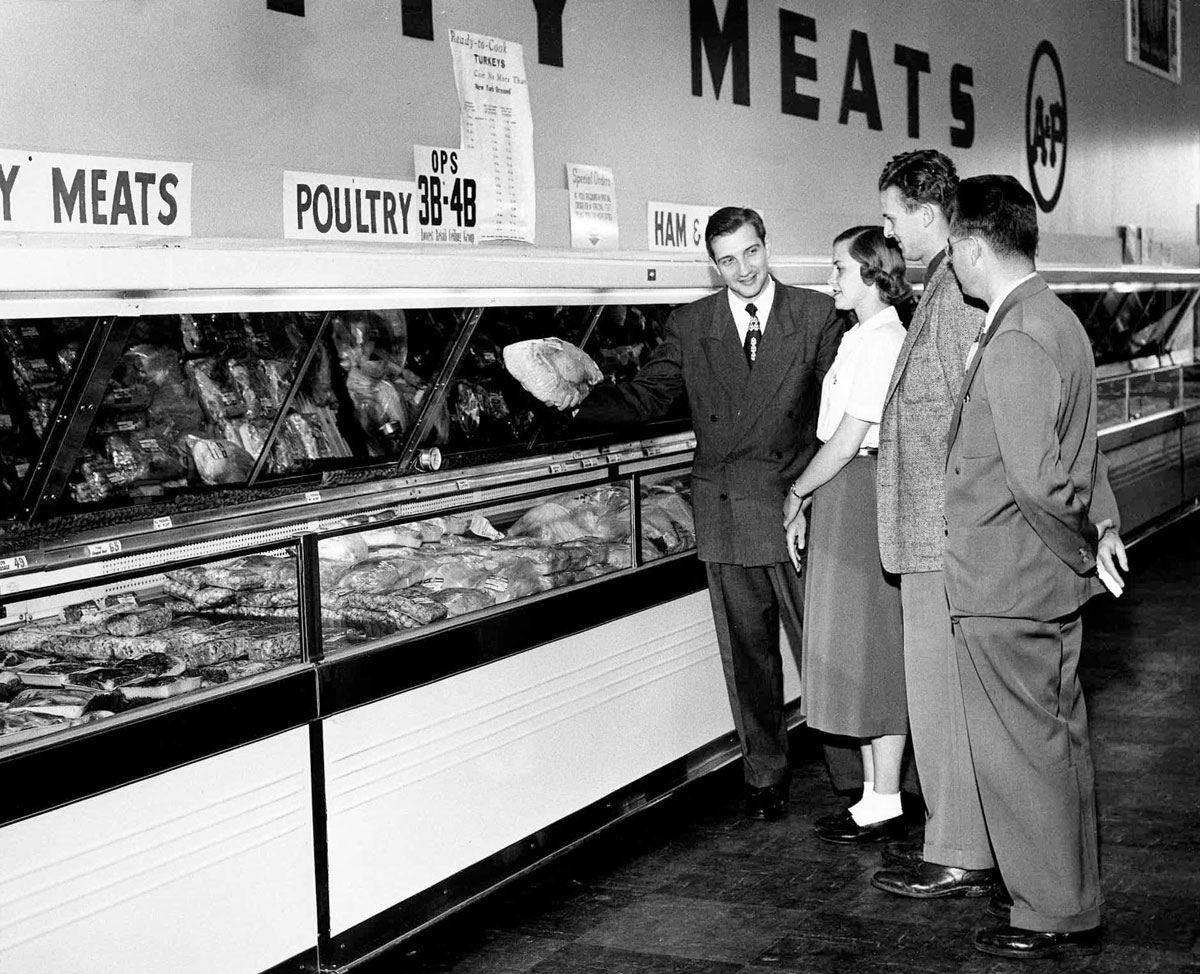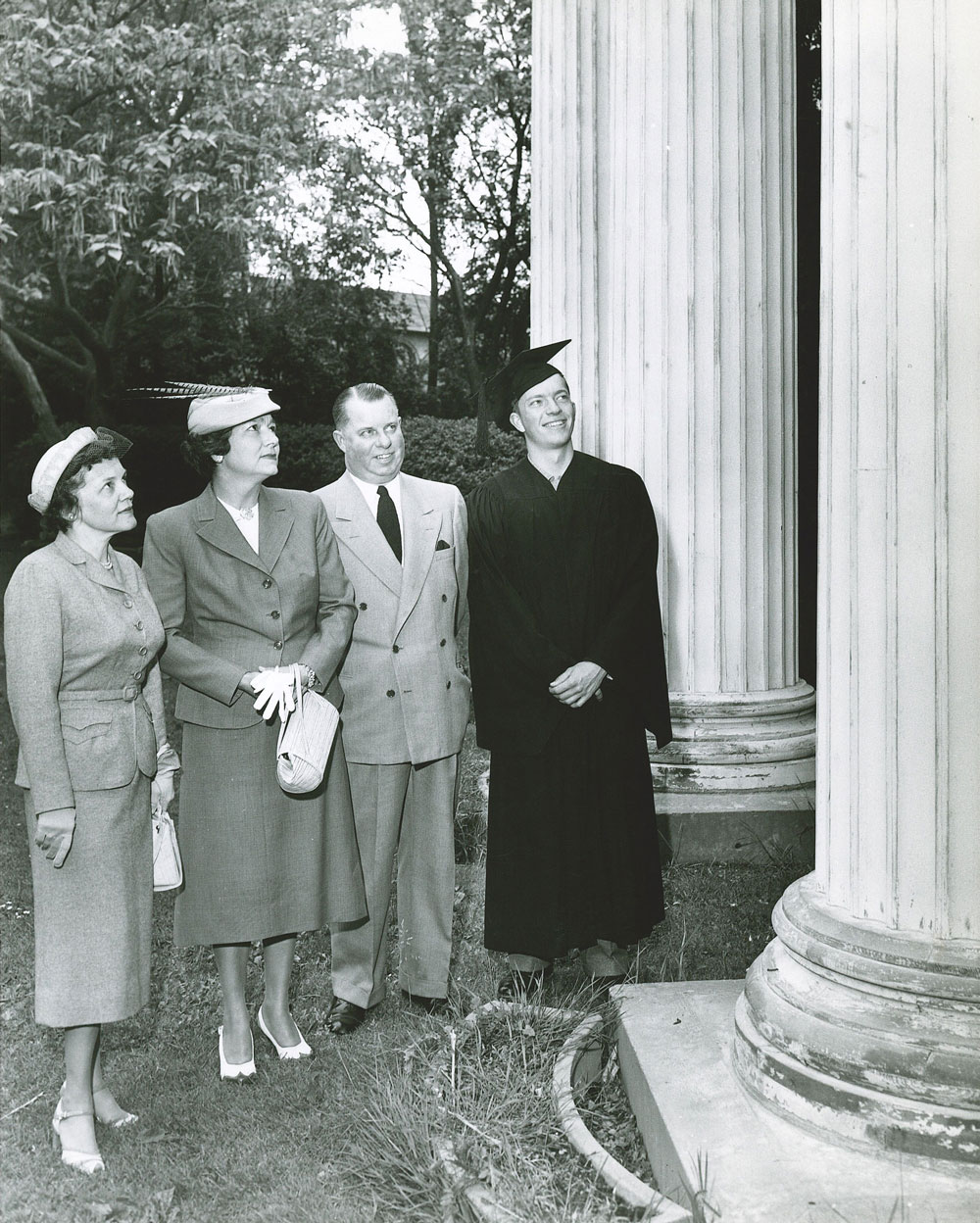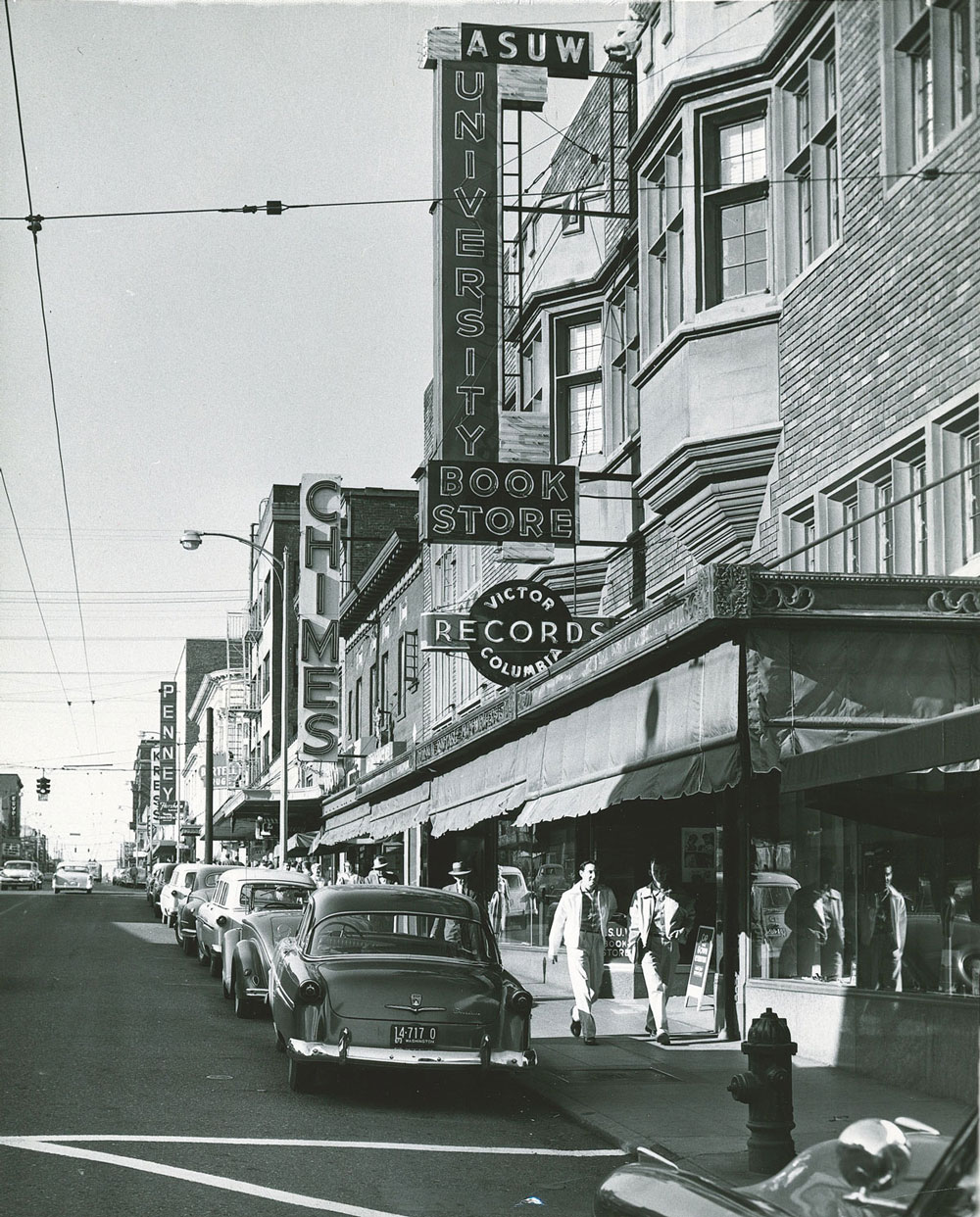Step back in time with these photos of the University District from the 1950s
The UW campus got a facelift or two over the past 164 years, but some things never change.
James Sneddon, ’63, ’70, captured the people and events of the University of Washington on film for more than three decades as the University’s chief photographer. He began taking photos in the Army in World War II and had a brief stint as a photographer for The Seattle Times before joining the UW staff as supervisor of news photography. For more on Sneddon’s career, check out UW Magazine Editor Jon Marmor’s write-up from 1997.
We found a few photos from Sneddon’s heyday. See if you can recognize the people and places of a bygone U-District.
At the A&P
From 1915 through 1975, A&P—short for “Great Atlantic and Pacific Tea Company”—was the largest grocery store chain in the United States. In the 1960s, A&P, refusing to update their stores for modern customers, fell out of favor on the West Coast. By 1974, they sold off their Seattle locations to Smith’s Food King, which was later acquired by Kroger.
If you’ve ever shopped at the Backcountry store at University Village (or before that, dined at the Ram Restaurant & Brewery), you might’ve stood where Sneddon snapped this photo of Newell Cornish and three UW students.

At the Columns
If you’ve read UW Magazine long enough, you know that our name from 1989–2019 was “Columns.” Our namesake pillars have a 164-year history in Seattle—they’re older than the state of Washington. The original UW campus was called Washington Territorial University and was located downtown, where the Fairmont Olympic Hotel now stands.
After the UW campus moved to its current location in 1985, Edmond Meany hoped to save the original downtown campus building. Unfortunately, only the columns remained after demolition. They were erected near Denny Hall in 1911, then moved to their current location in Sylvan Grove in 1921. Over the years, UW Facilities replaced the columns’ rotted wooden bases with sturdier concrete and gave them minor facelifts (paint, rust-proofing, regular cleaning) so that we can continue to enjoy them for another 164 years.
Did you know the columns have names? Loyalty, Industry, Faith and Efficiency (or “LIFE”) still make an appearance in graduation photos every year at the UW. Below, Sneddon captured Don Johnson, ’52, posing near Loyalty and Industry with his parents, Mr. and Mrs. Walter Johnson, and Margaret Whiteman at Johnson’s 1952 graduation.

On the Ave
You might have heard that the University District was once called Brooklyn before the Alaska-Yukon Exposition. But even before that, the Duwamish people called the area wəq̓iq̓əb (pronounced “wuhk-eek-uhb”), meaning “place of frogs.” Now, it’s familiarly known as the U-District to most. (Some modern place-names are still derived directly from Lushootseed, the language of the Duwamish and Coast Salish people. Licton Springs gets its name from the Lushootseed word for red mud, líq’tәd, and Shilshole is derived from the Lushootseed word šilšul, meaning “threading or inserting something.”)
The University Book Store, pictured below, opened in 1900, making it the oldest independent bookstore in Washington. The bookstore has been in its current location since 1924, and the Ave has changed significantly since then, with high rise apartment buildings and cranes dominating the new skyline. But 19,000 years ago, this was a glacier.
The Vashon Glacier was 3,000 feet at its thickest, or roughly 10 UW Towers tall. There were likely no humans in 17,000 B.C., but woolly mammoths roamed the glacier. As it receded, it carved out Seattle’s lakes and hilly neighborhoods. For the next few thousand years, the heavy glacier melted, and the ground where Seattle now stands sprung up and rose 275 feet. Trees filled the area, the Coast Salish people established villages, and about 10,000 years later, James Sneddon took this photo.

Would you like to see photos of the UW campus and community from another era? Comment your suggestions!